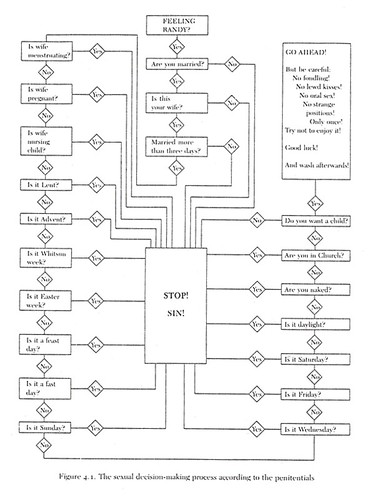So, this week Twitter (@ralphtorta, ladies and gents *winks*) informed me that those good folks over at King’s College London have launched a new podcast dealing with medieval matters. So I went and had a look, and, what do you know, it was pretty interesting:
http://www.on-soap.com/medieval-history-for-fun-and-profit-1/2017/4/29/episode-1-sex
Leaving aside the inherent oddness of hearing my elders and betters having an extended discussion about dildo use and manufacture, there are a couple of things this podcast raises I thought it would be worth talking about.
The first is a question which comes up towards the end of the episode. The idea behind the show is that they answer question sent in by the audience, and this week it’s ‘did medieval people know other kinds of sex?’. That question itself is framed in a rather eyebrow-raising way (what’s the non-other kind of sex?), but it leads our erstwhile presenters to ask: why do people frame the Middle Ages as being sexually naïve?
Their answer is about Church control over lay sex lives. People think that the Middle Ages consisted of people who don’t have sex telling people who do how to have it, and thus, boom, (or indeed not boom), sexual desert. And sure, that’s probably part of it, but I think there’s a little more that can be said here.
I call it ‘Rearview Mirror Syndrome’. When dealing with stuff outside living memory (nowadays, say, before the turn of the twentieth century), everything becomes an undifferentiated ‘past’, so Victorian and Tudor and Norman pasts get mixed up and amalgamated. Sure, this might not happen at the level of the most basic aesthetics – you won’t see William the Conqueror portrayed in a top hat – but that’s about as far as it goes. Hence why people think that medieval people burned witches at the stake (it’s really an Early Modern phenomenon), for instance.

This usually works backwards, because most people know (or think they know) more about the Tudor and Stuart periods than the Middle Ages and about Victorian times than the Tudors and Stuarts. Hence, you get a kind of foreshortening effect.
In this case, I think that there’s a train of thought going ‘the Victorians were unutterably prudish about sex, thus the past was as well, and thus the Middle Ages also covered up their legs and had sex through a hole in the bedsheet’: as in the case of witch burnings, people perceive all the past as being the same. Indeed, whilst it would be hard to argue that it’s the most profound job of historians in interacting with the public, one of our most basic tasks is, I would argue, just to remind people that past societies were chronologically varied. At the very least, this way we might get more interesting movies out of it…
(and yes, I will be reviewing the new King Arthur film. Stay tuned…)
The other point this podcast raised for me (wahey) was a question I’ve been asking for a long time. How did medieval people, and in my case specifically tenth- and eleventh-century people, have sex? It’s noticeable that for the most part, the presenters talk about canon law sources and what they prohibit (as memorialised in the by-now world-famous medieval sex flowchart:)

What this doesn’t tell us about, though, is quotidian sex. This is more important than it sounds, especially if you think about queens. One way a queen is supposed to be important, to have influence at court, is that she has the ear of the king during some pretty intimate moments; and it makes a fairly major difference here whether one envisages royal sex as a bit of perfunctory thrusting or a full evening of candles-and-rose-petals-and-sensual-massages.
Thietmar of Merseburg has a story about Henry the Fowler getting drunk and forcing himself upon his protesting wife St. Matilda. This is interesting for a couple of reasons, not least insofar it indicates that lack of consent to sex was seen as a real problem and a real evil (as Thietmar tells the story, the wickedness of the act allowed the Devil to enter Henry’s semen, impregnating St. Matilda with a baby who would go on to be a prominent and persistent rebel against royal authority); but also because it may, at least to my reading, indicate that this was seen as unusual, and that sex would usually be a more tender affair. Of course, there isn’t anything like enough evidence to tell, at least as far as I know; and there’s also the problem that sex is always particularly charged in medieval histories. Still, it’s one of those things that’s self-evidently sufficiently important to more than just the history of sexual practice that one would like to know…